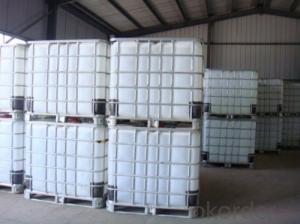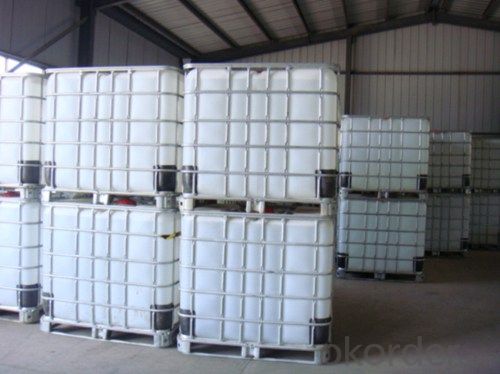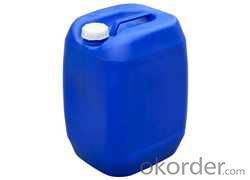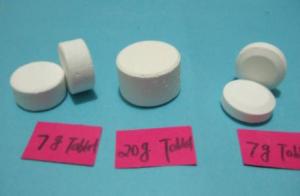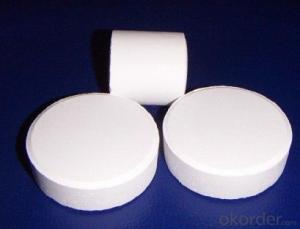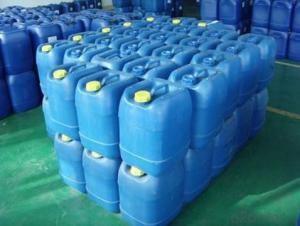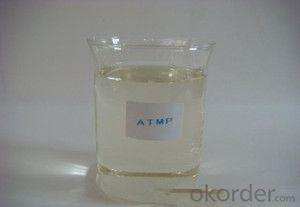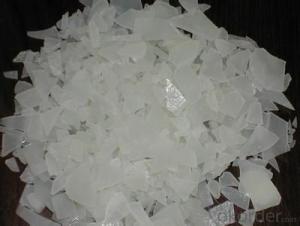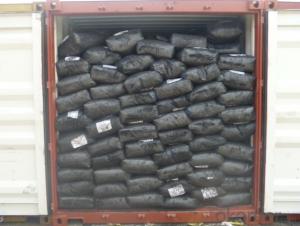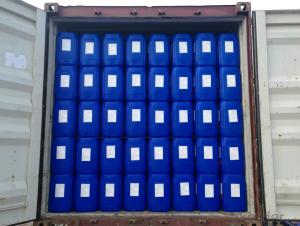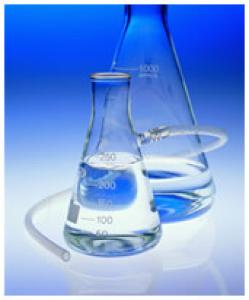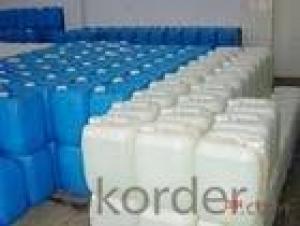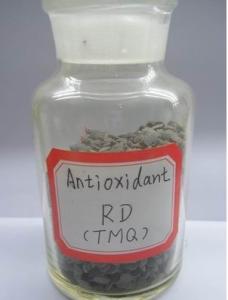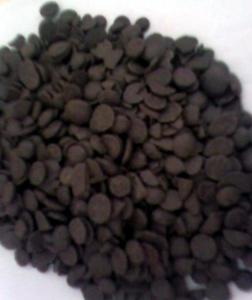formic acid industrial grade , factory direct delivery, made in China.
- Loading Port:
- Qingdao
- Payment Terms:
- TT OR LC
- Min Order Qty:
- 1 m.t.
- Supply Capability:
- 1000 m.t./month
OKorder Service Pledge
Quality Product, Order Online Tracking, Timely Delivery
OKorder Financial Service
Credit Rating, Credit Services, Credit Purchasing
You Might Also Like
Specification
colorless clear liquid:
pungent smell
Formic Acid
Popular name: Methanoic acid
CAS NO.: 64-18-6
EINECS: 200-579-1
Molecular formula: CH2O2, HCOOH
Formula weight: 46.03
InChI: 1S/CH2O2/c2-1-3/h1H,(H,2,3)
Melting point: 8.6 ℃
Density: 1.22
Water-solubility: Soluble
Physicochemical properties:
1.Colorless fuming flammable liquid and irritating dour.
2.Melting point: 8.6 ℃; Boiling point: 100.8 ℃; Flash point: 68.9 ℃
3.Solubility in water, ethanol and ether, slightly soluble in benzene
| Item | Specifications | |||||||||
|---|---|---|---|---|---|---|---|---|---|---|
| 99% | 94% | 90% | 85% | |||||||
| Superior | Superior | First-class | Qualified | Superior | Firs-class | Qualified | Superior | First-calss | Qualified | |
| Formic Acid, w/% ≥ | 99 | 94 | 90 | 85 | ||||||
| Colour /Hazen(Pt-Co)≤ | 10 | 10 | 20 | 10 | 20 | 10 | 20 | 30 | ||
| Diluting(sample+water=13) | clear | Clear | Pass test | Clear | Pass test | Clear | Pass test | |||
| Chlorides(as Cl),w/% ≤ | 0.0004 | 0.0005 | 0.001 | 0.002 | 0.0005 | 0.002 | 0.002 | 0.002 | 0.004 | 0.006 |
| Sulphates(as SO4),w/% ≤ | 0.0004 | 0.0005 | 0.001 | 0.005 | 0.0005 | 0.001 | 0.005 | 0.001 | 0.002 | 0.02 |
| Iron(as Fe)w/% ≤ | 0.0001 | 0.0001 | 0.0004 | 0.0006 | 0.0001 | 0.0004 | 0.0006 | 0.0001 | 0.0004 | 0.0006 |
| Evaporation Residues w/% ≤ | 0.003 | 0.006 | 0.015 | 0.02 | 0.006 | 0.015 | 0.02 | 0.006 | 0.02 | 0.06 |
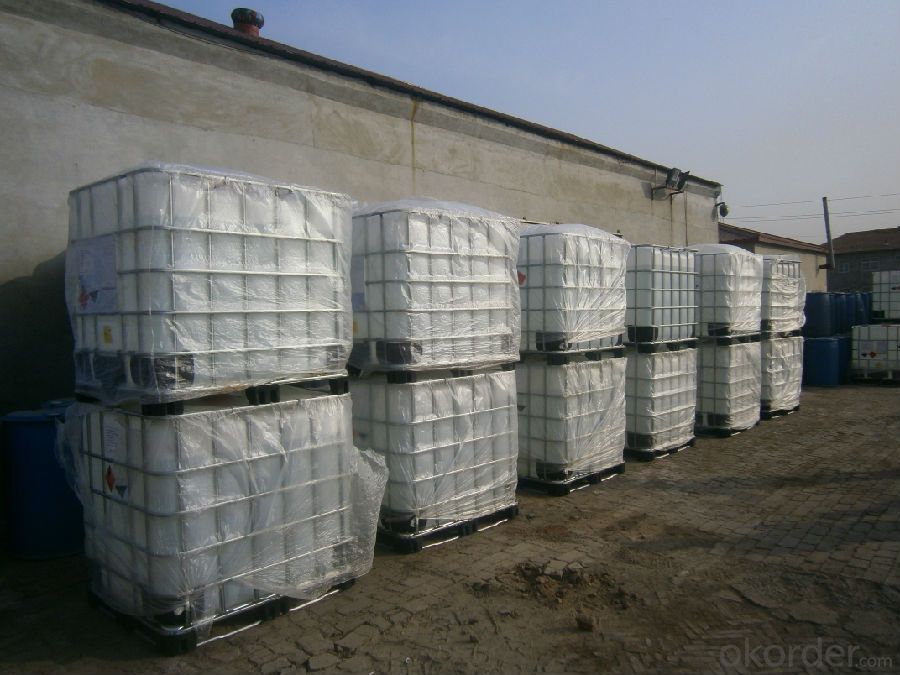
- Q: What is the principle of the catalyst? Why can change the rate of chemical reactions and their own without any change
- The catalyst can be used as the reaction of the original reaction into multiple reactions, such as two, then the catalyst can be the first reaction of the product, while the second reaction of the reactants, then the overall point of view, the amount of catalyst No change, is to change the reaction process.
- Q: pls give one or two catalysts that are used in the industry for example:Rhodium catalyst in a catalytic converter of a car or the Iron catalyst for making ammoniaTHANKS :)
- i will tell you the hydrogen and carbonmonixide production in indsutry they will use alumina based nickel catalyst for adsorption of gases, at high temperature it will breaks as small molecules like hydrogen, co2, co,ch4, after they will separate them using carbon molecular seives as catalyst. another catalyst for hydrogenation of double bond is copper chromate for sulphur removal from disel and petrol they will use COMOX ( copper and molybdinum catalyst ) after then pass through zinc sulfide with hydrogen gas , the sulfur will removed as a hydrogen sulfide.
- Q: How do I write about the ion equation?
- 4NH3 + 5O2 == 4NO + 6H2O
- Q: Horseradish enzyme catalyzed Luminol chemiluminescence reaction
- Disinfectant ah ~ bleach ah ~ ~ take this kind of thing to wash the blood once something can interfere with Lumino identification. So that want to do bad things must be a good plan. Lumino in the presence of copper, copper alloy, horseradish or some bleach in the presence of fluorescence. So if the scene of the crime was bleached
- Q: The chemical reaction equation of methanol heating and oxygen in the presence of catalyst
- Catalytic oxidation of formaldehyde
- Q: Does anybody have any tips or references I can go to for this? I'm writing a novel and the main character wants to be a catalyst; the story isn't about him and his journey, so much as the effects on everyone around him that come about simply because of him being there and being who he is. How would I go about doing this, and doing it well?
- Ways to be a catalyst: By his behaviour: - He is a good listener. People use him as a sounding board and make important decisions as a result. - He is indiscreet and inadvertently reveals people's secrets and back-sniping comments. - He is a ****-stirring gossip. - He is a home-wrecking Lothario. - He is wise and gives good advice. - He is a hooligan who ruins businesses with vandalism, costs people their jobs and ruins relationships by beating people up. - He is a manipulative, blackmailing bastard who tries to turn every woman into a prostitute and con every man out of his money. - He is a charlatan who preaches nonsense about religion, health and business investments. By effortlessly influencing other people's behaviour: - He is famous and people try to impress him wherever he goes. - He has cancer or a disabling war wound. People admire and pity him and are shocked by his PTs mood wings. - He is gay, Muslim or a suspected paedophile and people want to persecute or cure him. - He is destitute. People argue amongst themselves over whether it's because he's lazy, has bad karma or there but for the grace of God go I. - He really looks like Jesus, Buddha or Santa and the sight of him makes people contemplate their Humanist values, coming to various conclusions. Perhaps you can write about his reputation; how he earned it, how it precedes him and provokes prejudices that he sometimes confirms or disproves. Use a detached, omniscient God-narrator. (Pretend Morgan Freeman's reading the audiobook.) Alternatively perhaps he is not a catalyst but a neurotic voyeur, fascinated by the minutiae of other people's lives so that the mundane appears tumultuous. He is not influencing people but your account of the changes in people's lives are centred on his observation of them.
- Q: In biology, the enzyme seems to be a tool for opening a reaction, such as the decomposition of cellulose, such as linked RNA and protein, no enzyme can not. But in chemistry, the catalyst is only a regulatory role, change the reaction rate only. The teacher said that the enzyme is the catalyst. Is there any other effect of the enzyme? (Ignorant high three dogs, you do not spray the big god)
- In fact, the chemical reaction is from the substrate (S) to the product (P). The chemical reaction is from the substrate (S) to the product (P). The chemical reaction is from the substrate (S) to the product (P) the process of. However, there is a free energy barrier between S and P, and in the absence of a catalyst, it is difficult to step through it and will pull something about it. Or understood to want you to jump 3 meters high, it is simply to life.
- Q: Is there a catalyst in the chemical shop?
- If it is like vanadium pentoxide, which catalyzes sulfur dioxide, do not sell it because vanadium is highly toxic and most of the catalyst is expensive
- Q: Write a chemical formula in a chemical laboratory without the use of a catalyst for oxygen
- 2KMnO4 = Δ = K2MnO4 + MnO2 + O2 ↑
- Q: Does all chemical reactions have a catalyst?
- Not some reaction without catalyst
Send your message to us
formic acid industrial grade , factory direct delivery, made in China.
- Loading Port:
- Qingdao
- Payment Terms:
- TT OR LC
- Min Order Qty:
- 1 m.t.
- Supply Capability:
- 1000 m.t./month
OKorder Service Pledge
Quality Product, Order Online Tracking, Timely Delivery
OKorder Financial Service
Credit Rating, Credit Services, Credit Purchasing
Similar products
Hot products
Hot Searches
Related keywords
